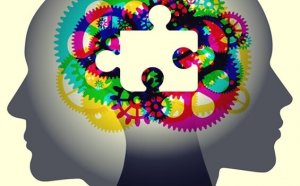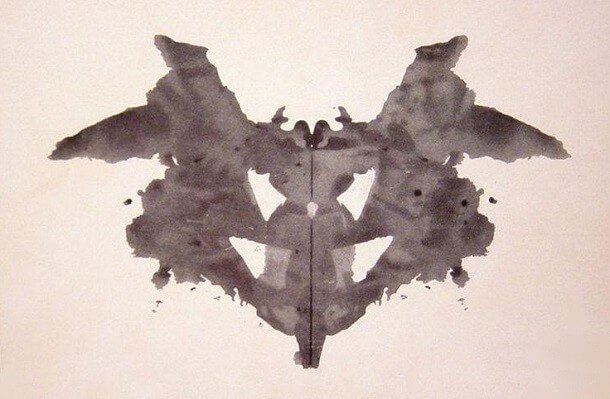Five Personality Tests, Compared and Contrasted


Written and verified by the psychologist Gema Sánchez Cuevas
Personality tests are one of the most widely used tools in psychological practice. Although personality is certainly hard to measure, and there are dynamics that make each individual unique, personality tests are more useful than we think. But first we have to know what types of tests exist, what they measure, and what methodology they use.
We’ve all likely taken a personality test at some point, whether as part of a job interview, for clinical purposes, or just for fun. However, we must remember that some tests are more valid than others. If we want reliable information, we have to be picky.
In psychological practice, we usually find two very specific types of tests. The first are the classical psychometric tests. They start from a cognitive-behavioral perspective and assume that people will be honest when answering questions.
The second type are projective tests. These are tests where the subject projects things from their unconscious that go unnoticed by creative or introspective exercises. These tests are very useful, especially in clinical practice, forensics, and with children. Next, we’ll go over which personality tests are most commonly used to define, understand, and describe personalities.

1. The Big 5 model
Although it’s not exactly a personality test, the “Big 5” model is one of the most well-known and laid the foundation for a large number of tests aiming to understand and measure human behavior. It’s divided into five main areas or dimensions known by the acronym “OCEAN”:
- Openness to experience
- Conscientiousness
- Extroversion
- Agreeableness
- Neuroticism
The test has considerable success in a variety of contexts: from clinician’s offices to job interviews to educational counselors. Many professionals in these fields see the Big 5 model as a very successful framework.
2. The 16PF questionnaire
The 16PF questionnaire is one of the most highly respected tests. It is the result of decades of work and analysis by Raymond B. Cattell, a British psychologist known for the major contributions he made to the fields of personality and intelligence. It was he who proposed, for example, the existence of fluid intelligence and crystallized intelligence.
The 16PF personality test has been continuously revised and updated, but the essence remains the same: 16 factors and five secondary factors.
- A (Warmth)
- B (Reasoning)
- C (Emotional stability)
- E (Dominance)
- F (Liveliness)
- G (Rule Consciousness)
- H (Social Boldness)
- I (Sensitivity)
- L (Vigilance)
- M (Abstractedness)
- N (Privateness)
- O (Apprehension)
- Q1 (Openness to Change)
- Q2 (Self-reliance)
- Q3 (Perfectionism)
- Q4 (Tension)

3. The Myers-Briggs Test
The Myers-Briggs type indicator is a personality test that’s well-known for being based on the works of Carl Jung. The test itself was developed by Katharine Cook Briggs and her daughter Isabel Briggs Myers. However, while this test is very popular, it’s not often used in clinical practice.
Because it lacks usefulness in clinical and forensic arenas, it is popular mainly for personal growth and sometimes in schools and workplaces. The information that the Myers-Briggs indicator can provide is the following:
- 1. How we focus our attention and get our energy (extroversion or introversion).
- 2. How we perceive and process information (sensation or intuition).
- 3. How we make decisions (thought or feeling).
- 4. How we are oriented towards the outside world (through more logical-rational judgments or more emotional perceptions.
4. The Minnesota Multiphasic Personality Inventory (MMPI)
The MMPI is one of the most popular personality exams for clinical, forensic, and personal purposes. It gives a fairly adjusted profile about the personality of each person, but it’s also suitable for detecting different kinds of mental disorders. The MMPI, therefore, measures people on a wide variety of scales. These include depression, cynicism, schizophrenia, anxiety, antisocial behaviors, mania and paranoia, etc.
5. Rorschach test
We’ve all heard of the Rorschach test. Movies make it seem as if every psychologist uses it every time a patient comes into his office. Well, that’s not quite the case. After Hermann Rorschach published the test in 1921, it immediately spread into the psychoanalytic community. At present, though, it is still a projective test, like the tree test or the Thematic Appreciation Test (TAT).

However, these projective tests require a professional to evaluate them. A professional must evaluate everything from how long it takes the patient to answer to the content he attributes to each one — and more.
The test is presented as a way to “trace” the shape and imprint of our personality. That is, used exclusively, it will never be conclusive. Ideally, this test and other instruments would come together to give more perspectives and result in a more precise description.
All cited sources were thoroughly reviewed by our team to ensure their quality, reliability, currency, and validity. The bibliography of this article was considered reliable and of academic or scientific accuracy.
- Genain, L., & Lerond, M. (2017). Los test psicologicos de aptitud y personalidad. Parkstone International.
- Espelage, D. L., Cauffman, E., Broidy, L., Piquero, A. R., Mazerolle, P., & Steiner, H. (2003). A cluster-analytic investigation of MMPI profiles of serious male and female juvenile offenders. Journal of the American Academy of Child & Adolescent Psychiatry, 42(7), 770-777.
- Grossman, S. D., & Amendolace, B. (2017). Essentials of MCMI-IV assessment. John Wiley & Sons.
This text is provided for informational purposes only and does not replace consultation with a professional. If in doubt, consult your specialist.








